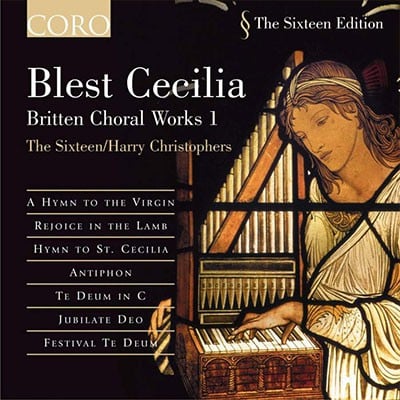Boosey & Hawkes
Choral level of difficulty: Level 2-3 (5 greatest)
Britten’s second setting of the Te Deum is completely different from the C major one he wrote eleven years earlier. It was composed for the centenary Festival of St. Mark’s Church in Swindon – an Anglo-Catholic church with a strong choral tradition which continues to this day. The structure of the piece is also different from the earlier work. A lengthy first section in unison which, while carefully notated in a variety of time signatures so that it feels as if it has the freedom of Gregorian chant, is accompanied by static organ chords in a regular 3/4 metre. It is a really imaginative approach, and is actually very simple to perform. While the organ chords continue, the choir breaks up into simple imitative phrases at ‘The glorious company of the Apostles praise Thee’ but soon returns to the unison lines of the opening. The central section (‘Thou art the King of Glory, O Christ’) has fanfare-like phrases from the choir interspersed by short dramatic outbursts from the organ which then subside into a rhythmic piano section with an important ostinato pedal part for the organ. These two ideas are then mixed together before the opening organ chords return and a treble/soprano soloist sings a lovely line. The choir joins and takes the canticle to its gentle conclusion with the soloist having the last word.
This setting is more straightforward than the earlier one. It does, however, have rhythmic issues which have to be mastered fully to do it justice. The choir, for instance, must not be pulled off course by the different time signature for the organ part in the opening and closing sections. It is all very straightforward in reality, it just looks complicated. Britten has thoughtfully annotated the vocal rhythm throughout the organ part for safety. The organist needs to be a confident musician. Where Britten may write eminently practically for the abilities of a parish church choir, he does not make similar allowances for the organist and the accompaniment is key to the success of a performance of this and many other such works.
Repertoire note by Paul Spicer

Margaret Phillips/The Sixteen/Harry Christophers
(c) and (p) 2002 The Sixteen Productions Ltd
Coro COR16006

